Commonly Asked Questions
What does the Cardinal Analytics Excel Add-In do?
Cardinal Analytics Excel Add-In provides convenience functions for importing Cardinal Analytics proprietary machine learning AI default, downgrade, and upgrade predictions into Excel. The predictions can be used to either monitor credit risk in existing portfolios, a credit risk input for quantitative strategies, or to uncover new opportunities.
How do I install the Add-In?
The Add-In can be installed from the Excel Add-In store. Simply click on 'Home', then 'Add-ins' and then 'Get Add-ins'. Searching "CRDNL" will then bring up the correct Add-In.
Searching "CRDNL" will then bring up the correct Add-In.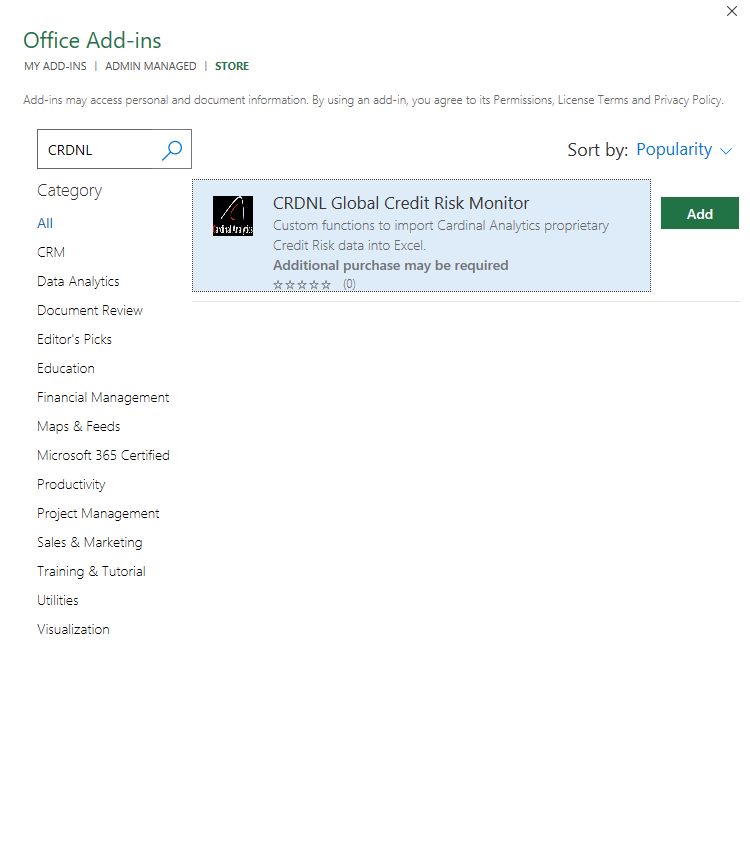
What symbology do you use?
ISIN and FIGI are the primary supported symbologies, ticker is also supported, but if possible it would be recommended to use ISIN or FIGI.
How do you identify companies?
Companies are identified by their primary equity listing e.g. Apple Inc. is BBG000B9XRY4, US0378331005, and AAPL US.
How do I get an API key?
To discuss your options please contact our salesteam.
Can I get a demo?
Of course! A demo can be booked here
Application & Examples
Setting the API key
After installing the Add-In and receiving the API key. Paste the API key into input box on the taskpane and click 'Save'.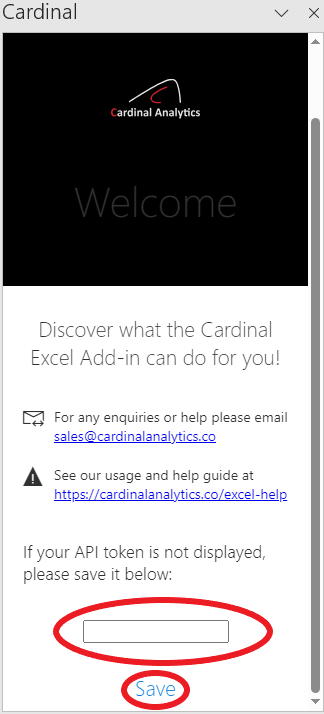
How does it work?
The Cardinal Analytics Excel Add-In functions can be separated into two categories: those fetching historical data and those fetching the latest data. The following functions are used for fetching default, downgrade, and upgrade historic data respectively:
= CRDNL.PD(‹cell range›, ‹start_date›, ‹end_date›)
= CRDNL.PD(‹cell range›, ‹start_date›, ‹end_date›)
= CRDNL.UP(‹cell range›, ‹start_date›, ‹end_date›)
The above functions all have the same function signature where:
‹cell range›: a range of cells containing symbols to search e.g. A1:A10
‹start_date›: The first date, in the form of YYYY-MM-DD, for whic to retrieve data.
‹end_date›: The last date, in the form of YYYY-MM-DD, for which to retrieve data.
The ‹start_date› and ‹end_date› parameters are optional, the default behaviour is to fetch the maximum possible range. For example the below fetches downgrade data from 2023-01-01 for a range of ISINs.
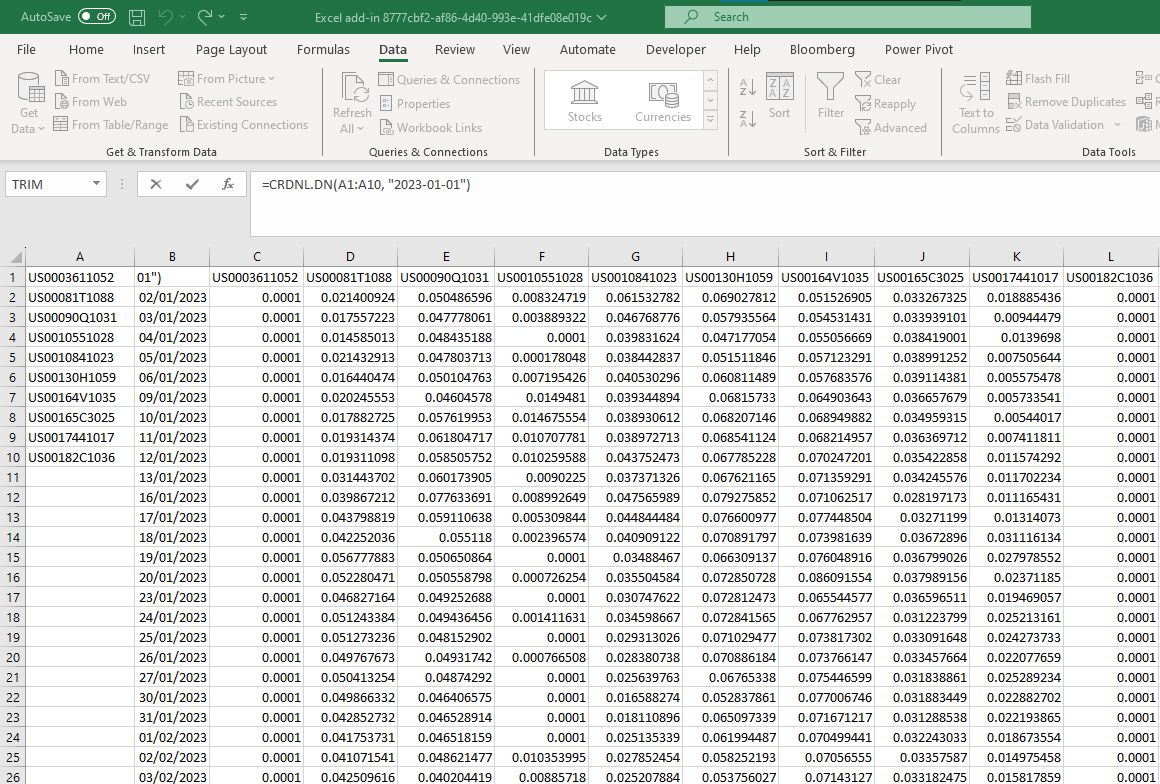
The other category is the function to fetch the most recent value. This takes the form:
= CRDNL.DAT(‹cell range›, ‹model›)
Where:
‹cell range›: a range of cells containing symbols to search e.g. A1:A10
‹model›: the model for which to fetch data, either “PD”, “DN”, or “UP”)
The model parameter is optional and defaults to “PD”. The below example shows the Add-In fetching default data for a range of FIGIs.

Examples
Fig 1: Current downgrade score for ISIN in cell A1.
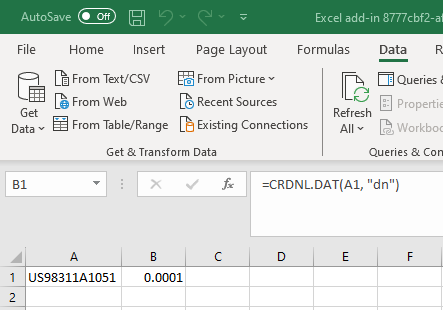
Fig 2: Full history for FIGIs in cells A1:A10.
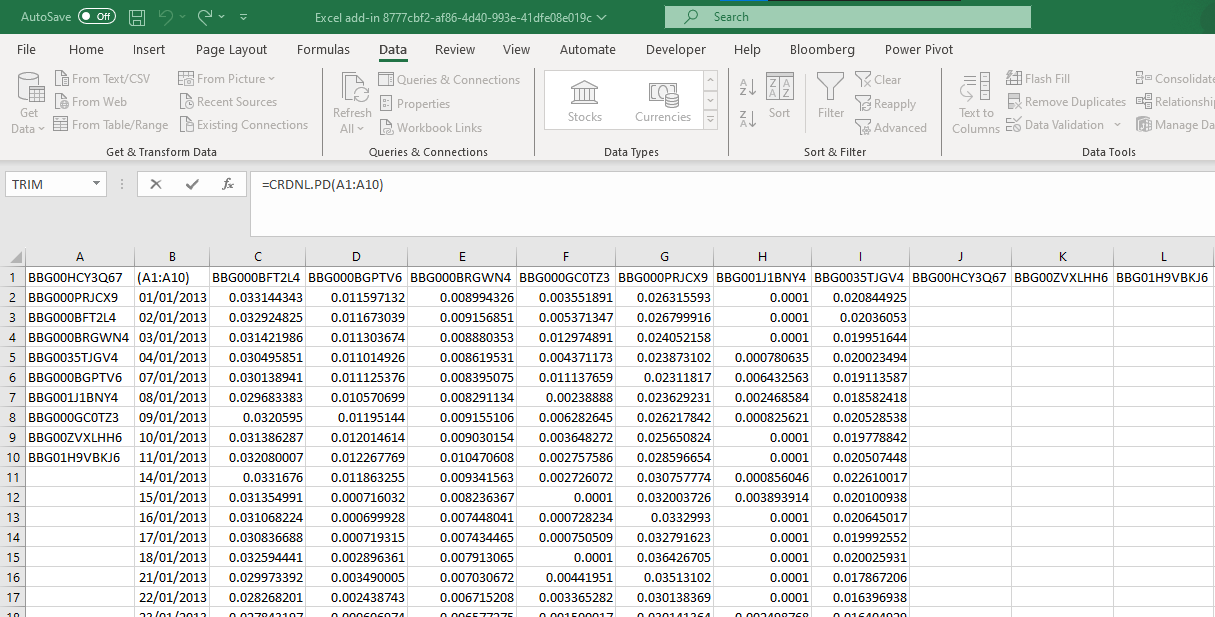
Fig 3: Current upgrade value for ticker "WH US".
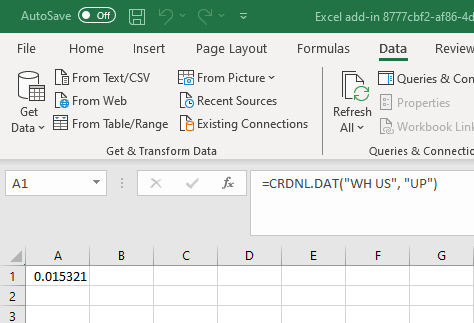
Fig 4: Historic upgrade data from 2022 for tickers in cells A1:A100.
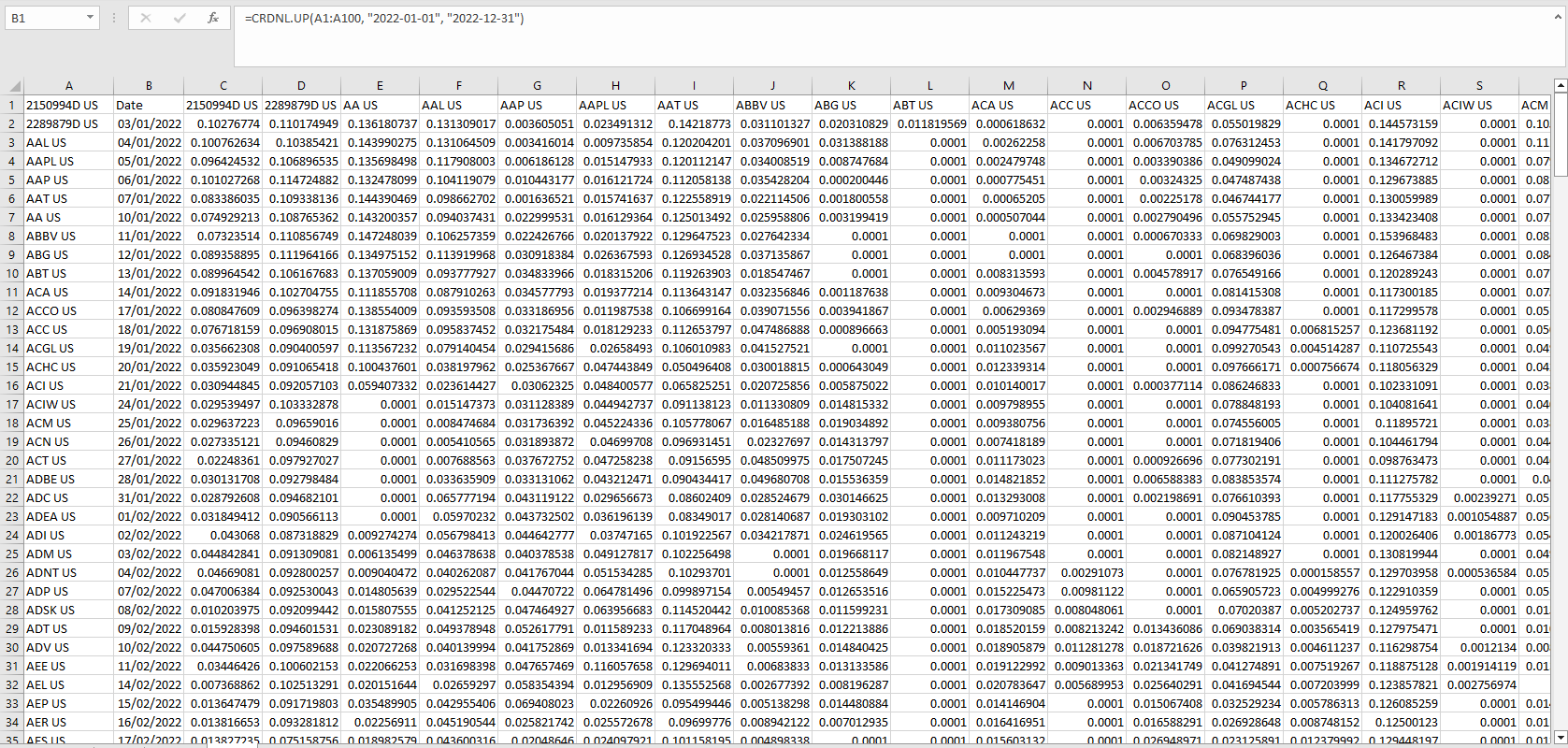
Help!
Function is returning #NA
There are two primary reasons for this to occur; firstly, the API key has not been set correctly, in which case try setting it again and retrying the function. Secondly, there is a symbology mismatch, in which case ensure the function is using the primary equity listing. If the error persists, contact engineering for further assistance.
Performace considerations
If the API is slow or unresponsive considering batching requests where possible, by using a cell range in the function, rather than creating multiple functions.Please note that the maximum number of symbols in one request is 1000.
Further help required!
Please contact engineering.
Data & Model
What is the data universe?
The universe is defined as any public company listed on a stock exchange with relevant equity price and financial/accounting data.
Are financial services firms modelled separately?
No. This, by definition, produces selection bias and a source of over-fitting. Our aim is to develop a general model that applies equally well in every industry, so there is no need to stratify for financial services firms. All industries are included in one single data set (industry classification indicators are anonymized in model development). The list of industry sectors covered is:
- Consumers
- Services
- Utilities
- Health Care
- Financials
- IT & Communications
- Industrials
- Materials
- Energy
What is the target/dependent variable?
The model is calibrated for predicting default in the subsequent 12 months, so the training data set has the target set to “1" in the 12 months leading to the actual default date of the bond/company, otherwise the target is set to “0".
What does “default" comprise?
The definition of default uses Moody’s Default and Recovery Database to determine whether a company has defaulted. Generally, default could comprise:
- Default on interest payment
- Default on principal
- Bankruptcy
- Entering Chapter 11
- Debt restructuring/debt-to-equity swap
- Breach of covenant
Does the definition of default include uneconomic behavior?
The definition for default does not extend to an issuer being “bailed out" by a government or governmental organization. Such an event is costly for the institution bailing out the issuer, and has been described as “uneconomic behavior". Cardinal Analytics attempts to model economic behavior only.
What machine learning model do you use?
Cardinal has developed a proprietary machine learning model which takes 60 variables and essentially tries to determine how similar those variables for a company are to a company that has defaulted in the past. The higher the similarity, the higher the probability of default. The 60 variables are split into three equal categories: 1) equity market derived; 2) accounting variables; and 3) macro-economy derived.